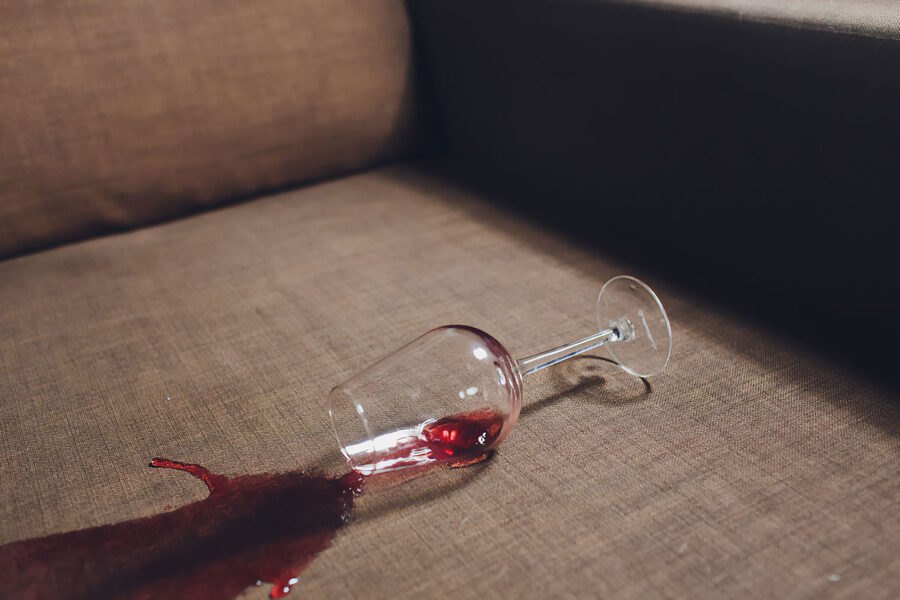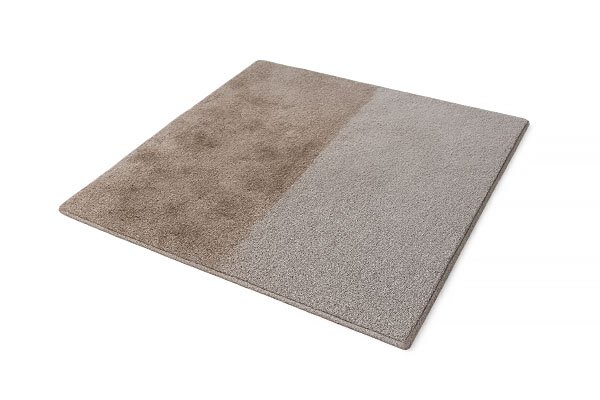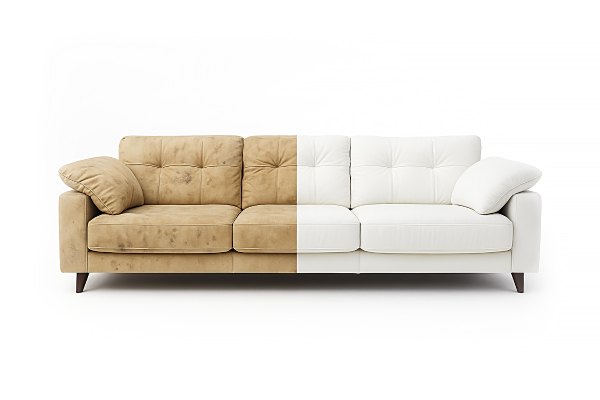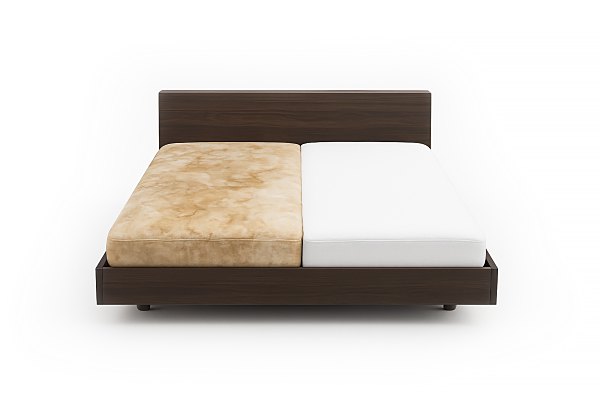Red wine spills on upholstery can transform a pleasant evening into a cleaning crisis. The deep crimson liquid penetrates fabric fibres rapidly, creating stubborn marks that seem impossible to eliminate. Many homeowners face this common household disaster and often worsen the situation through incorrect cleaning attempts.
Quick action becomes the deciding factor between minor inconvenience and permanent furniture damage. Fresh spills respond far better to treatment than dried stains that have bonded with fabric fibres. Understanding the science behind wine stains helps select the most effective removal approach.
Immediate response techniques to prevent permanent staining
Time represents the most critical factor when dealing with red wine spills on upholstery. The longer wine remains on fabric, the deeper it penetrates and the more difficult removal becomes. Quick action can mean the difference between a minor cleaning task and permanent furniture damage that requires professional restoration or replacement.
The first step involves blotting, never rubbing, the spilled wine. Rubbing pushes the liquid deeper into fabric fibres and spreads the stain over a larger area. Clean, absorbent materials like paper towels or white cloth work best for gentle pressing against the spill.
Emergency Blotting Protocol
Start blotting immediately after the spill occurs. Apply gentle pressure to absorb as much wine as possible without forcing it deeper. Replace saturated towels with fresh ones frequently to maintain absorption effectiveness.
Continue this process until no more wine transfers to the towels. The goal is removing as much liquid as possible before it sets into the fabric. Speed matters more than perfection during this initial stage.
Cold water plays a crucial role in initial stain treatment. Warm or hot water can set the stain permanently by causing proteins in the wine to coagulate. Pour a small amount of cold water onto the stain and continue blotting.
This dilutes the wine concentration and makes removal easier. The water should be applied sparingly to avoid oversaturating the upholstery. Too much water can spread the stain or damage certain fabric types.
Fabric Assessment Methods
Different upholstery materials require specific approaches during emergency treatment. Natural fibres like cotton and linen absorb liquids quickly but respond well to water-based treatments. Synthetic materials may repel water initially but can trap stains in their fibres.
Delicate fabrics such as silk or wool need gentler handling to prevent damage. Test any cleaning method on an inconspicuous area first. This prevents colour bleeding or fabric damage in visible areas.
Some upholstery fabrics have special finishes that react poorly to certain cleaning agents. Always check manufacturer care labels before applying any treatment. The surrounding area needs protection during emergency treatment.
Place towels or plastic sheeting around the stained area to prevent cleaning solutions from spreading. This containment strategy protects adjacent fabric areas from potential damage or discolouration.
Salt absorption method for fresh wine spills
Salt provides an excellent first-line defence against fresh red wine spills on upholstery. This common household item works by absorbing liquid and preventing deeper penetration into fabric fibres. The crystalline structure of salt creates multiple absorption points that draw moisture away from the fabric.
Apply salt generously over the entire stained area while the wine remains wet. The salt should completely cover the spill with a thick layer extending slightly beyond the stain boundaries. This ensures maximum absorption and prevents the wine from spreading to clean areas.
Application Technique
Pour salt directly from the container onto the fresh spill. Create a mound that completely covers the wine stain. The salt will begin absorbing the liquid immediately, changing colour as it works.
Allow the salt to sit for at least 10-15 minutes to achieve maximum absorption. The salt crystals will darken as they draw wine from the fabric. Longer contact time may be needed for larger spills or deeper penetration.
Monitor the salt’s colour change to gauge absorption progress. Fresh salt can be added if the initial application becomes fully saturated. The salt method works best when applied within minutes of the spill occurring.
Removal Process
After the absorption period, carefully vacuum or brush away the salt. Use a soft brush or vacuum with upholstery attachment to remove all salt particles. Check the fabric underneath to assess remaining stain intensity.
Essential Salt Treatment Steps:
- Apply salt immediately while wine is wet
- Cover entire stain area completely
- Wait 10-15 minutes for absorption
- Remove salt with vacuum or soft brush
- Assess remaining stain for further treatment
The salt method often removes a significant portion of fresh wine stains. This technique works best as an initial step rather than a complete solution. Most wine spills require additional treatment after salt absorption.
Prepare for secondary cleaning methods while the salt continues working. This approach maximises stain removal effectiveness and prevents permanent setting. The salt creates a foundation for more advanced cleaning techniques.
White wine and baking soda combination treatment
White wine neutralises red wine stains through a chemical reaction that breaks down colour compounds. This counterintuitive method works because white wine contains acids that dissolve the tannins responsible for red wine staining. The combination with baking soda creates a powerful cleaning solution that lifts stains from deep within fabric fibres.
Pour white wine directly onto the red wine stain, ensuring complete coverage. The white wine should saturate the stained area thoroughly. Allow the white wine to work for several minutes before adding baking soda.
Chemical Reaction Process
The acids in white wine interact with red wine tannins, causing them to lose their binding properties. This chemical breakdown makes the stain easier to lift from fabric fibres. Baking soda adds alkaline properties that further neutralise acidic compounds.
Sprinkle baking soda generously over the white wine-treated area. The combination will create a mild fizzing reaction as the alkaline baking soda interacts with wine acids. This reaction helps lift stain particles from deep within fabric fibres.
Allow the mixture to work for 15-20 minutes. The fizzing action continues breaking down stain compounds during this period. The baking soda also provides additional absorption properties that draw moisture from the fabric.
Watch for the reaction to subside, indicating the chemical process is complete. The treated area may appear foamy or bubbly during the active phase. This visual cue helps determine when to proceed to the next step.
Extraction Method
Blot the treated area with a clean, damp cloth to remove the wine and baking soda mixture. Work from outside edges toward the centre to prevent spreading. Rinse the area with cold water and blot dry with clean towels.
This removes residual cleaning agents and prevents sticky residue formation. Multiple blotting cycles may be necessary to remove all traces of the treatment mixture. The fabric should feel clean and free of residue when properly rinsed.
Evaluate stain removal success after the area dries completely. Wet fabric often appears darker, making accurate assessment difficult. If stain traces remain visible, repeat the white wine and baking soda treatment.
Multiple applications may be necessary for complete removal of stubborn stains. Each treatment cycle should show progressive improvement in stain visibility. Club soda can substitute for white wine in this method.
Pro tip: Club soda provides similar acidic properties with additional carbonation for enhanced lifting action, making it an excellent alternative when white wine isn’t available.
Professional furniture upholstery cleaning services in Sydney provided by SevenClean
Professional cleaning services represent the most reliable solution for stubborn red wine stains on valuable upholstery. Sydney residents have access to specialised cleaning companies that employ advanced techniques and professional-grade equipment. These services combine expertise with powerful cleaning solutions to restore furniture to pristine condition.
SevenClean stands as a leading provider of upholstery cleaning services throughout Sydney’s metropolitan area. The company specialises in comprehensive furniture restoration using state-of-the-art steam cleaning technology. Their experienced technicians handle all fabric types, from delicate antiques to modern synthetic materials, with precision and care.
Comprehensive Service
SevenClean operates multiple specialised cleaning divisions to address various household needs. Their furniture upholstery cleaning service employs advanced steam extraction methods combined with targeted stain removal techniques. The process begins with thorough fabric assessment to determine the most appropriate cleaning approach for each piece.
The company’s mattress cleaning service addresses hygiene concerns and allergen removal for improved sleep quality. Professional technicians use specialised equipment to deep clean mattresses, removing embedded dirt, dust mites, and stains. This service proves particularly valuable for households with allergies or respiratory sensitivities.
Carpet and rug cleaning represents another core service offering from SevenClean. The company utilises hot water extraction methods to remove deep-seated dirt and stains from floor coverings. Their comprehensive approach ensures thorough cleaning while protecting delicate fibres and maintaining colour integrity.
SevenClean services
The integrated service approach allows customers to address all cleaning needs through a single trusted provider. SevenClean maintains consistent quality standards across all service divisions. Each cleaning project receives personalised attention and customised treatment plans.
Advanced Technology and Equipment
Professional cleaning equipment surpasses household capabilities in both power and precision. Steam cleaning systems reach temperatures that eliminate bacteria and allergens while loosening embedded stains. Specialised extraction equipment removes moisture quickly, reducing drying times and preventing mould growth.
The company’s cleaning solutions are carefully formulated for effectiveness and safety. Eco-friendly products protect both fabric integrity and environmental health while delivering superior cleaning results. These professional-grade solutions often succeed where household remedies fail, particularly with set-in stains.
Pro tip: Schedule professional cleaning immediately after attempting home remedies if stains persist, as some DIY treatments can make professional removal more challenging if left too long.
Hydrogen peroxide and dish soap solution for stubborn marks
Hydrogen peroxide serves as a powerful oxidising agent that breaks down organic stains like red wine. This common household antiseptic penetrates deep into fabric fibres to lift embedded colour compounds. When combined with dish soap, it creates an effective cleaning solution for stubborn upholstery stains that resist other treatments.
The oxidising action of hydrogen peroxide works by breaking chemical bonds in stain molecules. This process causes colour compounds to lose their chromophore properties, effectively bleaching the stain. The reaction occurs gradually, making it safer for most upholstery fabrics than harsh chemical bleaches.
Solution Preparation
Mix equal parts hydrogen peroxide and liquid dish soap in a small bowl. Use 3% hydrogen peroxide concentration, which is safe for most fabrics. The dish soap provides surfactant properties that help the solution penetrate fabric fibres more effectively.
Stir gently to combine without creating excessive foam. The mixture should be uniform but not frothy. Test the solution on an inconspicuous area before applying to the stain.
Some fabrics may experience colour changes with hydrogen peroxide treatment. Allow the test area to dry completely before proceeding with stain treatment. This precaution prevents damage to visible furniture areas.
Application Process
Apply the hydrogen peroxide and dish soap mixture directly to the wine stain using a clean cloth or sponge. Work the solution into the fabric gently, avoiding aggressive scrubbing that could damage fibres. The solution should saturate the stained area completely for maximum effectiveness.
Allow the solution to work for 10-15 minutes before blotting with clean towels. The hydrogen peroxide needs time to break down stain compounds through oxidation. Longer contact time may be necessary for older or more stubborn stains.
Monitor the fabric for any adverse reactions during treatment. The hydrogen peroxide can continue working if not completely removed, potentially causing fabric damage over time. Use clean, damp cloths to rinse and blot the area multiple times.
Ensure complete removal of soap residue to prevent sticky buildup. The treated area should feel clean and free of any slippery or tacky sensation. Proper rinsing prevents dirt attraction and maintains fabric texture.
Safety Considerations
Hydrogen peroxide can cause skin irritation, so wear gloves during application. Ensure adequate ventilation when using this solution, as hydrogen peroxide can release oxygen gas. Store hydrogen peroxide in a cool, dark place as light and heat can cause decomposition.
Hydrogen Peroxide Treatment Steps:
- Mix equal parts 3% hydrogen peroxide and dish soap
- Test solution on hidden fabric area
- Apply mixture to stain with gentle working motion
- Allow 10-15 minutes contact time
- Blot with clean, damp cloth
- Rinse thoroughly with cold water
- Blot dry with absorbent towels
Never mix hydrogen peroxide with other cleaning chemicals. This can create dangerous reactions or reduce cleaning effectiveness. Use hydrogen peroxide solutions immediately after mixing for best results.
The hydrogen peroxide solution works best on fresh to moderately aged stains. Older stains may require multiple treatments or alternative methods. Always prioritise fabric safety over stain removal intensity when using oxidising agents.
Pro tip: Add a few drops of white vinegar to the hydrogen peroxide solution for enhanced stain-fighting power, but test this combination carefully as it can be more aggressive on certain fabrics.
Vinegar-based cleaning mixtures for deep penetration
White vinegar provides natural cleaning power through its acetic acid content, which dissolves mineral deposits and organic stains. This household staple penetrates deep into upholstery fibres to break down wine stains at the molecular level. Vinegar-based solutions provide safe, non-toxic alternatives to harsh chemical cleaners while delivering effective stain removal results.
The acidic nature of vinegar helps neutralise alkaline compounds in red wine while dissolving tannin structures. This dual action makes vinegar particularly effective against wine stains that have begun to set. The natural antimicrobial properties of vinegar also help eliminate odours associated with spills.
Basic Vinegar Solution
Create a cleaning solution by mixing one part white vinegar with two parts cold water. This dilution provides effective cleaning power while reducing the strong vinegar odour. Add a small amount of liquid dish soap to enhance the solution’s ability to lift stains from fabric fibres.
The water dilution makes vinegar safe for most upholstery fabrics while maintaining cleaning effectiveness. Undiluted vinegar can damage certain materials or cause colour fading. Always test the solution on an inconspicuous area before treating visible stains.
Apply vinegar-based solutions using a spray bottle for even distribution across the stained area. The fine mist ensures thorough coverage without oversaturating the fabric. Work the solution into the stain using a clean cloth with gentle circular motions.
The spray application method allows for controlled coverage and prevents oversaturation. Even distribution ensures consistent treatment across the entire stained area. Gentle working motions help the solution penetrate without damaging fabric structure.
Enhanced Vinegar Formulations
Combine white vinegar with baking soda for a powerful foaming action that lifts embedded stains. Mix two tablespoons of white vinegar with one tablespoon of baking soda and one cup of warm water. The resulting fizzing reaction helps dislodge stain particles from deep within fabric fibres.
Another effective combination involves mixing white vinegar with hydrogen peroxide and dish soap. This triple-action solution provides acid neutralisation, oxidising power, and surfactant properties. Use equal parts of each ingredient for balanced cleaning action.
Allow vinegar solutions to penetrate for 15-20 minutes before blotting with clean towels. The acid needs time to break down stain compounds effectively. Longer contact time may be necessary for older stains that have set deeply into fabric fibres.
Vinegar Treatment Methods:
- Basic solution: 1 part vinegar, 2 parts water, small amount dish soap
- Foaming action: vinegar, baking soda, warm water mixture
- Triple-action: equal parts vinegar, hydrogen peroxide, dish soap
- Enhanced penetration: 15-20 minute contact time
- Deep cleaning: gentle circular motions during application
Vinegar solutions can leave a temporary acidic smell that dissipates as the fabric dries. Improve air circulation around treated furniture to speed odour elimination. Opening windows or using fans helps remove vinegar smell more quickly.
The cleaning benefits far outweigh the temporary odour inconvenience. Most vinegar smell disappears within a few hours of treatment completion. Proper ventilation accelerates the odour removal process significantly.
Pro tip: Mix vinegar with a few drops of essential oil like lavender or tea tree to mask the acidic smell while adding natural antimicrobial properties to the cleaning solution.
Commercial enzyme cleaners versus homemade remedies
Enzyme cleaners represent advanced biotechnology applied to stain removal, using specific proteins to break down organic compounds. These commercial products target wine stains at the molecular level, digesting tannins and other colour-causing substances. The enzymatic action continues working long after application, providing deep cleaning that penetrates fabric fibres.
Homemade remedies rely on common household items and basic chemical principles to remove stains. These solutions often work through physical absorption, acid neutralisation, or oxidation processes. While less sophisticated than enzyme cleaners, homemade methods provide immediate availability and cost-effective treatment options.
Enzyme Cleaner Advantages
Commercial enzyme cleaners contain specialised proteins designed to target specific stain types. Wine-specific enzymes break down tannins and anthocyanins more effectively than general cleaning agents. These products often include multiple enzyme types to address various stain components simultaneously.
The biological action of enzymes provides gentle yet thorough cleaning that won’t damage delicate fabrics. Unlike harsh chemicals, enzymes work at room temperature and don’t require aggressive scrubbing. This makes them ideal for antique or expensive upholstery that requires careful handling.
Enzyme cleaners continue working after application, breaking down stain compounds over time. This extended action can remove stains that have resisted other treatment methods. The biological process is environmentally friendly and safe for use around children and pets.
Professional formulations undergo extensive testing to ensure effectiveness and safety. Clear instructions and dosage guidelines reduce the risk of fabric damage during application. Many enzyme cleaners come with satisfaction guarantees from manufacturers.
Homemade Remedy Benefits
Homemade solutions provide immediate availability when wine spills occur. Most households have vinegar, baking soda, or hydrogen peroxide readily available for emergency stain treatment. This immediate response capability often proves more valuable than waiting to purchase commercial products.
Cost considerations favour homemade remedies for occasional use. A single bottle of enzyme cleaner costs more than the ingredients for multiple homemade cleaning solutions. Households with infrequent staining incidents may find homemade methods more economical.
Performance Comparison Factors:
| Aspect | Commercial Enzyme Cleaners | Homemade Remedies |
|---|---|---|
| Cost | Higher initial investment | Very low using household items |
| Availability | Requires purchase and storage | Immediately available in most homes |
| Effectiveness | Highly targeted scientific formulation | Variable results depending on stain age |
| Safety | Professional testing with clear instructions | Generally safe with familiar ingredients |
| Convenience | Ready-to-use formulation | Requires mixing and preparation |
Familiarity with ingredients provides confidence in safety and application methods. Most people understand the properties and risks of common household items like vinegar and baking soda. This knowledge reduces anxiety about potential fabric damage or health concerns.
Selection Criteria
Choose enzyme cleaners for expensive upholstery, antique furniture, or stains that have resisted homemade treatments. The investment in commercial products makes sense when protecting valuable furniture pieces. Professional formulations reduce the risk of damage during cleaning attempts.
Select homemade remedies for immediate treatment of fresh spills or when commercial products aren’t available. These solutions provide effective first aid for wine stains while being gentle on most fabric types. The low cost makes them practical for regular household use.
Enzyme cleaners excel at removing old, set-in stains that have resisted other treatment methods. The biological action can break down stain compounds that have bonded permanently with fabric fibres. This makes enzyme cleaners the preferred choice for valuable furniture or stubborn stains.
Homemade remedies work best on fresh spills when applied immediately. The simple chemical actions of household ingredients can effectively remove wine before it sets permanently. Quick application of salt, vinegar, or hydrogen peroxide often produces excellent results at minimal cost.
Pro tip: Keep both commercial enzyme cleaner and homemade remedy ingredients on hand – use homemade solutions for immediate treatment, then follow up with enzyme cleaner if stains persist after initial treatment.
Summary
Red wine stains on upholstery need not spell disaster for beloved furniture pieces. Quick action combined with the right cleaning techniques can restore even heavily stained upholstery to its original beauty. The methods outlined in this guide provide options for every situation, from emergency spill response to professional cleaning services.
Success depends on understanding that different approaches work better for different circumstances. Fresh spills respond well to immediate blotting and household remedies like salt absorption or white wine neutralisation. Older, set-in stains may require more aggressive treatments using hydrogen peroxide solutions or professional enzyme cleaners.
Professional services like SevenClean provide the ultimate solution when home remedies prove insufficient. Their advanced equipment and specialised knowledge can tackle even the most stubborn wine stains while protecting valuable upholstery. Remember that prevention through quick action remains the best strategy, but these proven removal techniques ensure that wine spills don’t have to mean permanent furniture damage.





